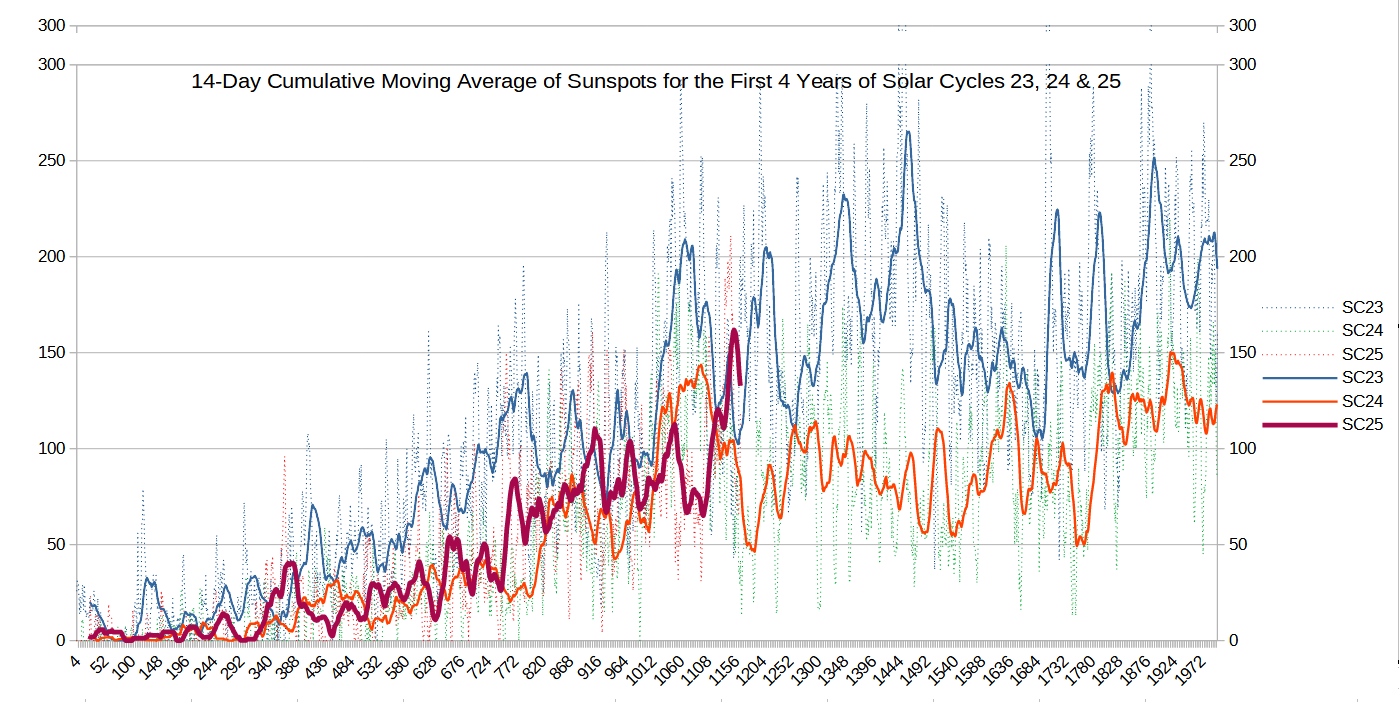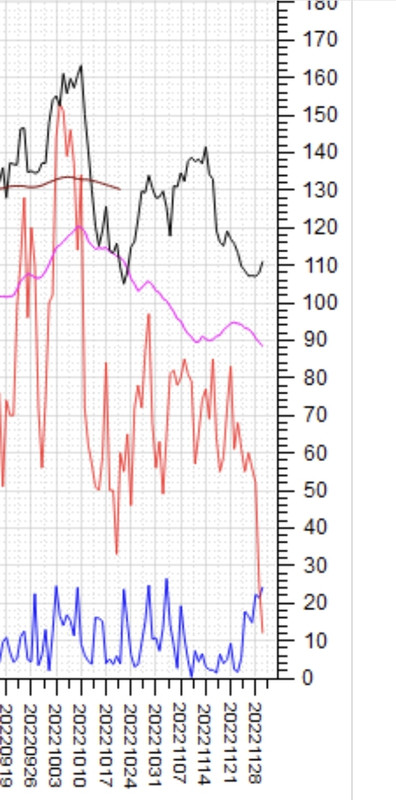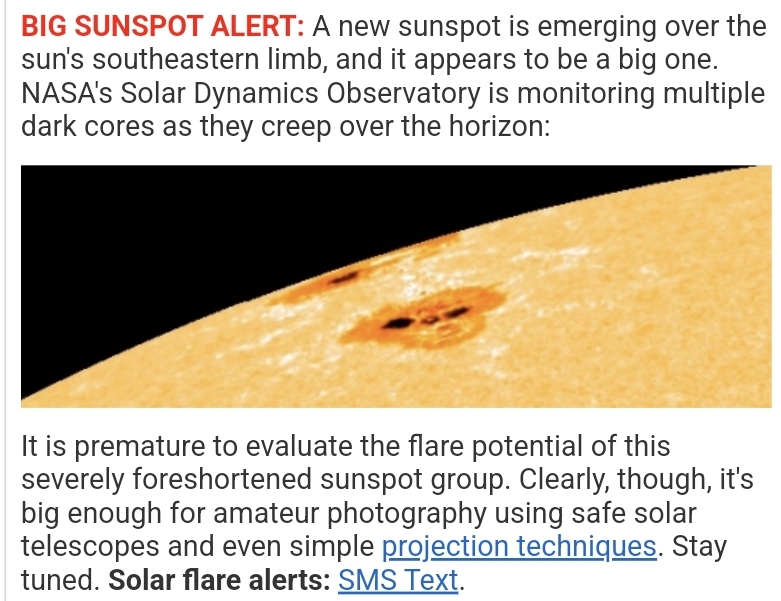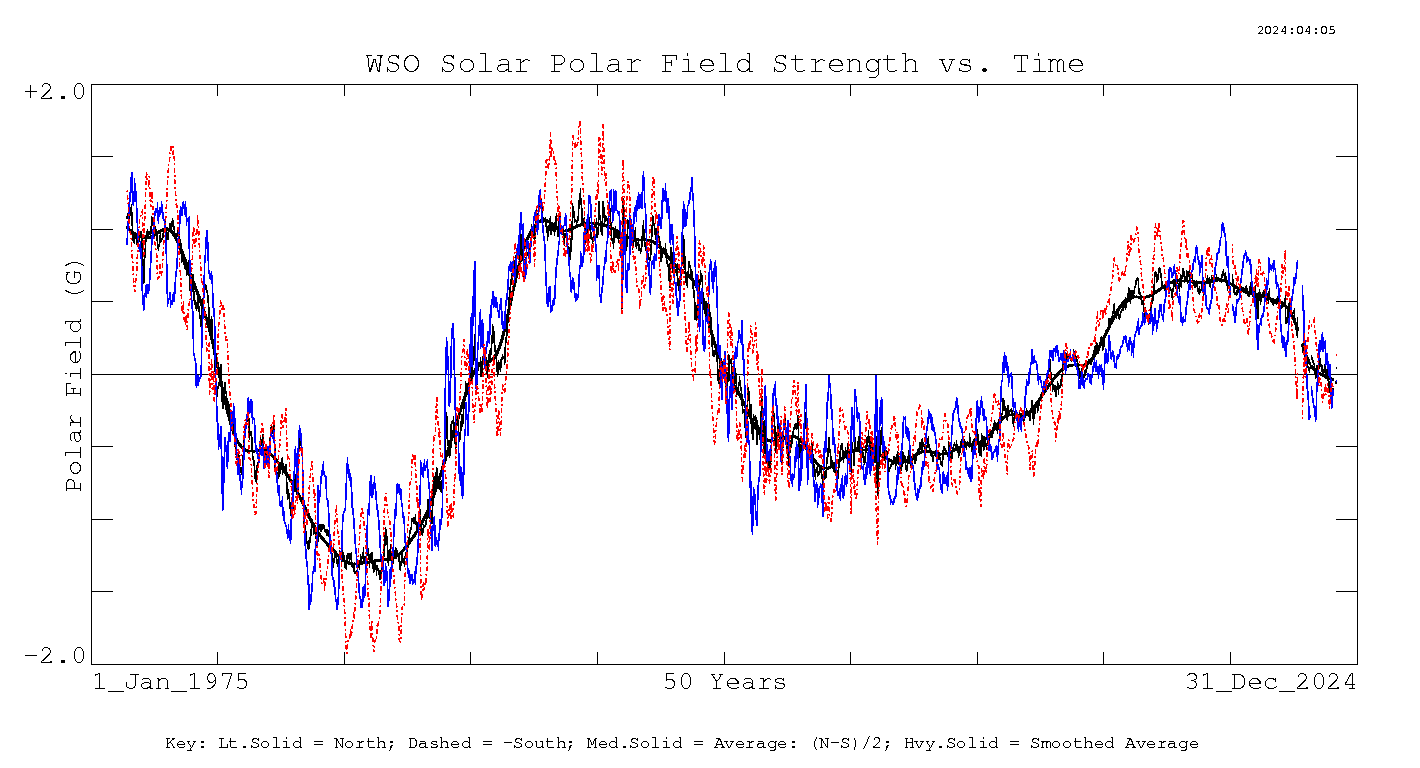|
|
Post by ratty on Nov 27, 2022 11:21:53 GMT
A slowdown currently going on.  Missouri, what do the dotted lines represent? |
|
|
|
Post by missouriboy on Nov 27, 2022 18:48:18 GMT
Those are 7-day running averages.
|
|
|
|
Post by ratty on Nov 28, 2022 4:27:25 GMT
Those are 7-day running averages. .... and what does the difference tell us? |
|
|
|
Post by missouriboy on Nov 28, 2022 8:53:00 GMT
Those are 7-day running averages. .... and what does the difference tell us? That there is a sh_t-load of variance ... and I was too lazy to remove them.  |
|
|
|
Post by ratty on Nov 28, 2022 9:06:44 GMT
.... and what does the difference tell us? That there is a sh_t-load of variance ... and I was too lazy to remove them.   |
|
|
|
Post by acidohm on Dec 1, 2022 20:24:29 GMT
Hello!  |
|
|
|
Post by acidohm on Dec 1, 2022 20:28:07 GMT
About to change however  |
|
|
|
Post by duwayne on Dec 2, 2022 18:25:20 GMT
The chart below shows the Solar Polar field peaks over the past 5 solar cycles. As summarized in another thread, Svalgaard used these data to predict the maximum sunspot number for Cycle 25.
He looks at just the overall peaks of the Solar field cycles to predict the peak sunspot numbers. (It doesn’t matter whether the peak is positive or negative since that just reflects the orientation of the polar fields. It’s the sun’s field strength that matters.) Svalgaard issued his Cycle 25 prediction a couple of years ago. The Solar Polar field was then showing a peak slightly above the previous (negative) peak and his prediction therefor, was for a maximum sunspot number for Cycle 25 slightly higher than Cycle 24.
Since then, as shown in the chart below, the recent solar field peak did not stay near the peak level very long and appears to be trailing off a little faster than the previous (negative) peak. Does this mean the peak Cycle 25 will be weaker than originally predicted? Does the durability of the solar field peak matter? Or is the peak maximum the key?  |
|
|
|
Post by missouriboy on Dec 2, 2022 19:12:21 GMT
The chart below shows the Solar Polar field peaks over the past 5 solar cycles. As summarized in another thread, Svalgaard used these data to predict the maximum sunspot number for Cycle 25.
He looks at just the overall peaks of the Solar field cycles to predict the peak sunspot numbers. (It doesn’t matter whether the peak is positive or negative since that just reflects the orientation of the polar fields. It’s the sun’s field strength that matters.) Svalgaard issued his Cycle 25 prediction a couple of years ago. The Solar Polar field was then showing a peak slightly above the previous (negative) peak and his prediction therefor, was for a maximum sunspot number for Cycle 25 slightly higher than Cycle 24.
Since then, as shown in the chart below, the recent solar field peak did not stay near the peak level very long and appears to be trailing off a little faster than the previous (negative) peak. Does this mean the peak Cycle 25 will be weaker than originally predicted? Does the durability of the solar field peak matter? Or is the peak maximum the key?  I will look forward to Dr Svalgaard educating us on those questions. |
|
|
|
Post by ratty on Dec 2, 2022 22:02:51 GMT
|
|
|
|
Post by blustnmtn on Dec 2, 2022 22:21:34 GMT
Dr. Svalgaard is a true scientist dedicated to his field. If his prediction does not prove correct, I will be anxious to hear his analysis/post mortem. Perhaps the theory becomes unreliable when the fields drop below a certain level. Regardless, it’s not “Settled Science”…
|
|
|
|
Post by douglavers on Dec 3, 2022 0:48:47 GMT
looking at the polar field strength graph, this complete amateur thinks:
a) This Solar Max significantly weaker than last
b) It has been a much longer cycle than previous [? 20 yrs vs about 11]
I think it was David Archibald a long time ago who pointed out the strong inverse relationship between length of solar cycle and planetary temperature.
|
|
|
|
Post by duwayne on Dec 3, 2022 17:53:33 GMT
Dr. Svalgaard is a true scientist dedicated to his field. If his prediction does not prove correct, I will be anxious to hear his analysis/post mortem. Perhaps the theory becomes unreliable when the fields drop below a certain level. Regardless, it’s not “Settled Science”… A big benefit of using the peak Solar Polar Field value to predict the peak sunspot number without waiting on more information as to length of time the solar field stays elevated is that it allows the prediction to be made years earlier.
It would be interesting to see a chart of the Solar Polar Field Values (all as positive numbers) plotted along with the Sunspot Numbers. The two series would be scaled so the peaks are similar and the dates would be adjusted so the peaks are coordinated in time. Based on the "Svalgaard Hypothesis" the lines should be pretty similar. |
|
|
|
Post by missouriboy on Dec 3, 2022 19:11:31 GMT
Dr. Svalgaard is a true scientist dedicated to his field. If his prediction does not prove correct, I will be anxious to hear his analysis/post mortem. Perhaps the theory becomes unreliable when the fields drop below a certain level. Regardless, it’s not “Settled Science”… A big benefit of using the peak Solar Polar Field value to predict the peak sunspot number without waiting on more information as to length of time the solar field stays elevated is that it allows the prediction to be made years earlier.
It would be interesting to see a chart of the Solar Polar Field Values (all as positive numbers) plotted along with the Sunspot Numbers. The two series would be scaled so the peaks are similar and the dates would be adjusted so the peaks are coordinated in time. Based on the "Svalgaard Hypothesis" the lines should be pretty similar. Do you have a link to data base containing the solar polar field values? |
|
|
|
Post by blustnmtn on Dec 3, 2022 21:04:55 GMT
Leif's original prediction on 25:
Prediction of Solar Cycle 25
Leif Svalgaard [leif@leif.org, lsvalgaard@gmail.com], Stanford University, Stanford, CA, USA
There is growing acceptance of the suggestion by Schatten et al. (GRL 5, 411, 1978) that the
Sun’s polar fields during a few years leading up to solar minimum is a ‘seed’ for the next solar cycle,
being transported to and amplified in the interior by the solar global dynamo. If so, Predicting the
size of the next solar cycle then comes down to predicting [or better: measuring] the polar fields. I
use the observations since 1976 from WSO supplemented by the latest data from HMI to determine
the solar axial Dipole Moment [DM] comparing it to DM at the previous minimum. Already at this
time [≈2 years before minimum] the DM now is larger than the previous DM signaling that solar
cycle 25 will be larger than cycle 24. Including the evidence from the recent heliospheric magnetic
field [that also is a precursor of the cycle] leads to an estimate for SC25 approximately midway
between cycles 20 and 24.
Perhaps Sol does not agree.
|
|